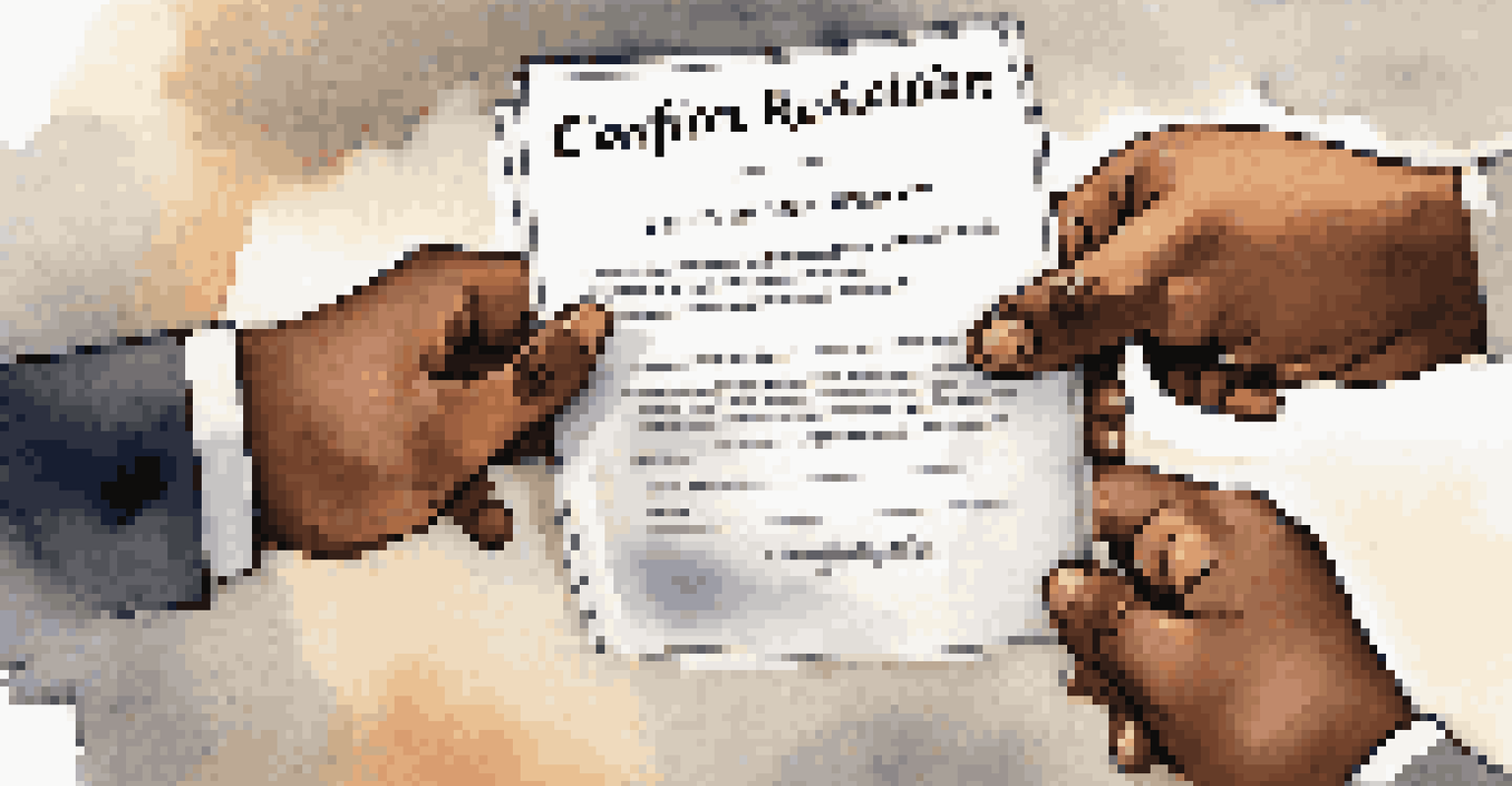Developing a Conflict Resolution Policy for Your Organization

Understanding the Importance of Conflict Resolution Policies
Conflict is a natural part of any workplace, and how it’s managed can make or break team dynamics. A well-defined conflict resolution policy helps ensure that disputes are resolved constructively, promoting a healthier work environment. This policy acts as a guideline for employees, providing them with the tools they need to address issues before they escalate.
Conflict is inevitable, but combat is optional.
By establishing a clear framework, organizations can minimize misunderstandings and foster open communication. A strong policy not only empowers employees but also enhances overall productivity and morale. When team members feel supported in resolving conflicts, they are more likely to collaborate and innovate together.
Ultimately, a robust conflict resolution policy reflects an organization's commitment to a respectful workplace. It shows employees that their concerns are taken seriously and that there's a structured process for addressing disputes. This proactive approach can significantly reduce turnover and create a culture of trust.
Identifying Key Stakeholders in Policy Development
Involving the right people is crucial for developing an effective conflict resolution policy. Key stakeholders typically include HR personnel, team leaders, and even employees from various departments. Their insights can help create a policy that addresses the unique needs and dynamics of your organization.

Engaging these stakeholders early in the process ensures that diverse perspectives are considered, leading to a more comprehensive policy. It’s also beneficial to involve those who have experienced conflict firsthand; their experiences can highlight potential pitfalls and effective strategies for resolution. This collaborative approach fosters a sense of ownership and commitment among employees.
Importance of Conflict Resolution Policies
A clear conflict resolution policy fosters a constructive workplace, enhancing communication and team dynamics.
By understanding the perspectives of all parties involved, you can create a policy that resonates with your workforce. This not only improves buy-in but also increases the chances of successful implementation. Remember, a conflict resolution policy should work for everyone, so inclusivity is key.
Establishing Clear Procedures for Conflict Resolution
A vital component of any conflict resolution policy is having clear procedures in place. These steps should outline how conflicts should be reported, addressed, and escalated if necessary. Providing a structured process helps employees feel more secure in bringing their issues forward, knowing there’s a fair system in place.
The greatest problem in communication is the illusion that it has been accomplished.
It’s important to be specific about the roles of different parties during the resolution process. For instance, managers may be responsible for initial assessments, while HR could handle formal investigations. By defining these roles, you reduce ambiguity and ensure that everyone knows what to expect during a conflict resolution.
Additionally, consider including timelines for each stage of the resolution process. This creates a sense of urgency and accountability, ensuring that conflicts don’t linger unresolved. Clear procedures not only promote transparency but also encourage a culture of prompt resolution.
Training Employees on Conflict Resolution Techniques
Training is essential for the successful implementation of your conflict resolution policy. Employees should be equipped with the skills to manage conflicts effectively, whether they are mediating a disagreement or addressing their own concerns. Workshops and role-playing scenarios can be effective ways to teach these skills in a practical, engaging manner.
Moreover, training should focus on communication techniques, active listening, and emotional intelligence. These skills help employees navigate conflicts with empathy and understanding, leading to more productive outcomes. When employees feel confident in their ability to resolve disputes, they’re less likely to avoid confrontation, which can lead to bigger issues down the line.
Engaging Stakeholders for Success
Involving diverse stakeholders in policy development ensures a comprehensive approach that meets the needs of all employees.
Regular refresher courses can also be beneficial, keeping conflict resolution techniques top of mind. This ongoing education reinforces the importance of the policy and keeps employees engaged in maintaining a collaborative work environment.
Encouraging Open Communication Among Team Members
Open communication is the backbone of an effective conflict resolution policy. Encouraging employees to express their concerns and viewpoints candidly can prevent misunderstandings from escalating into serious conflicts. Creating a culture of transparency means that employees feel safe discussing their issues, knowing they will be heard.
Regular team meetings and check-ins can facilitate this open dialogue, allowing team members to voice concerns in a structured setting. These forums can be an opportunity for feedback, collaboration, and even conflict resolution before issues escalate. When employees see that their voices matter, they are more likely to engage positively with one another.
Additionally, consider implementing anonymous feedback systems, which can provide insights into underlying tensions without putting anyone on the spot. This dual approach of open and anonymous communication can create a more inclusive atmosphere where all employees feel empowered to contribute.
Evaluating and Updating Your Conflict Resolution Policy
Once your conflict resolution policy is in place, it’s crucial to evaluate its effectiveness regularly. Gathering feedback from employees about their experiences with the policy can reveal areas for improvement. Consider conducting surveys or holding focus groups to discuss what's working and what isn't.
It's also important to assess whether the policy aligns with the organization's evolving culture and values. As your organization grows or changes, your conflict resolution strategies may need to adapt as well. Regular evaluations ensure that the policy remains relevant and effective in addressing current workplace dynamics.
Training for Effective Conflict Management
Providing employees with training on conflict resolution techniques empowers them to address issues confidently and collaboratively.
Don’t hesitate to make adjustments based on this feedback. When employees see that their input leads to tangible changes, they’re more likely to trust and engage with the policy. An adaptable conflict resolution policy not only improves relationships within your team but also enhances overall organizational health.
Celebrating Successful Conflict Resolutions
Recognizing and celebrating successful conflict resolutions can reinforce the importance of your policy. When conflicts are resolved effectively, take the time to acknowledge the efforts of those involved. This recognition not only boosts morale but also encourages others to engage in constructive conflict resolution.
Consider sharing success stories during team meetings or through internal communications. Highlighting positive outcomes showcases the value of the conflict resolution policy and demonstrates that it leads to meaningful results. Celebrations can serve as a reminder that conflicts, when handled well, can lead to stronger relationships and a more cohesive team.

Moreover, creating a culture that values resolution rather than avoidance can transform how conflicts are perceived within your organization. When employees see that conflicts can lead to growth and understanding, they may approach challenges with a more positive attitude.